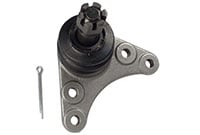Maximize Audi Performance with Quality Outer Tie Rod Ends
The outer tie rod end might not be a well-known part of a vehicle, but it is vital for steering and safety. For Audi owners, keeping this part in good condition helps maintain the smooth and precise handling that Audis are known for. Over time, wear and tear can lead to issues such as clunking noises, loose steering, and uneven tire wear. By understanding the function and maintenance needs of the outer tie rod end, Audi owners can prevent more serious problems and keep their vehicles in top shape.
Understanding the Outer Tie Rod End
The outer tie rod end is a vital part of a car’s steering system. It connects the steering rack to the steering knuckle, allowing the wheels to turn. This component ensures the wheels respond accurately to the driver’s steering input, providing smooth and precise control of the vehicle. In Audi vehicles, maintaining the outer tie rod end in good condition is essential for safe and comfortable driving. Key signs of a failing tie rod end include clunking noises, loose steering, and uneven tire wear, all of which can negatively impact vehicle performance and safety.
How the Outer Tie Rod End Differs from the Inner Tie Rod End
While both the inner and outer tie rod ends are crucial for steering, they operate in different areas of the system.
Location
The outer tie rod end connects to the steering knuckle, while the inner tie rod end connects to the steering rack. This means the outer tie rod end is more exposed and can be more susceptible to damage from road debris and environmental conditions.Function
The outer tie rod end transmits the steering input directly to the wheels, allowing them to turn. The inner tie rod end, on the other hand, transfers the movement from the steering rack to the outer tie rod end.Symptoms of Failure
A failing outer tie rod end may cause clunking noises, loose steering, and uneven tire wear. The inner tie rod end, if failing, can also cause loose steering and clunking noises but is generally less exposed to direct impacts.Replacement Process
Replacing the outer tie rod end is typically easier as it involves detaching it from the steering knuckle. Replacing the inner tie rod end can be more complex, as it involves accessing the steering rack.Maintenance Frequency
The outer tie rod end needs more frequent inspections due to its exposure to the elements, while the inner tie rod end, being more protected, requires less frequent checks
How Are Tie Rod Ends Designed?
The design process for tie rod ends involves several critical steps to ensure they meet high-quality standards and performance requirements:
Material Selection
The first step involves selecting high-strength materials, such as cold forged or hot forged steel, known for their durability and strength. This material choice is crucial for ensuring the tie rod ends can withstand the stresses and loads they will encounter during vehicle operation.Prototyping and Testing
Once the materials are selected, prototypes are created. These prototypes undergo rigorous testing to simulate real-world driving conditions. Tests include stress tests, fatigue tests, and corrosion resistance tests to ensure the tie rod ends can handle the demands of everyday use.Precision Manufacturing
Using advanced manufacturing techniques, such as CNC machining and laser etching, ensures that each tie rod end is produced with high precision. Laser-etched batch codes are added for tracking and quality control purposes.Surface Treatment
To enhance durability and resist corrosion, a surface treatment is applied. This treatment can include processes such as galvanizing or coating with anti-rust materials.Quality Assurance
Every tie rod end undergoes a final inspection to ensure it meets the required specifications and performance standards. This includes verifying dimensions, strength, and surface quality.OEM Development
In the case of our tie rod ends, they are developed from OEM samples, ensuring compatibility and performance equivalent to or better than the original parts. This step ensures that the tie rod ends fit perfectly and function seamlessly as a direct replacement
Impact of Changing Outer Tie Rod Ends on Audi Vehicles
Replacing the outer tie rod ends on your Audi can significantly enhance vehicle performance and safety. Here are the key impacts:
Improved Steering Precision
New tie rod ends ensure that your Audi’s steering is responsive and precise, enhancing overall driving control.Enhanced Safety
Replacing worn tie rod ends reduces the risk of steering failures, contributing to safer driving conditions.Better Tire Wear
New tie rod ends help maintain proper wheel alignment, which can prevent uneven tire wear and extend the lifespan of your tires.Reduced Noise and Vibration
Worn tie rod ends can cause clunking noises and vibrations. Replacing them can result in a quieter and smoother ride .Increased Vehicle Longevity
By maintaining the steering system in good condition, you can potentially extend the overall lifespan of your vehicle, avoiding more costly repairs in the future.
Main Features of Our Tie Rod Ends
Our tie rod ends for Audi vehicles are designed for quality and durability.
High-Strength Steel Construction
Made from cold forged or hot forged high-strength steel, ensuring strong performance and long life.Advanced Surface Treatment
Provides excellent anti-rust protection, extending the lifespan of the tie rod ends even in harsh conditions.Laser-Etched Batch Codes
Each tie rod end has laser-etched batch codes for precise manufacturing tracking and quality control.Superior Pull or Push Out Strength
Our tie rod ends meet or exceed original equipment (OE) specifications, ensuring reliable performance.Perfect OE Replacement
Designed for direct replacement without any fitting issues, making installation easy.Low Minimum Order Quantity
Ideal for businesses of all sizes, with a minimum order quantity as low as 30 pieces.






